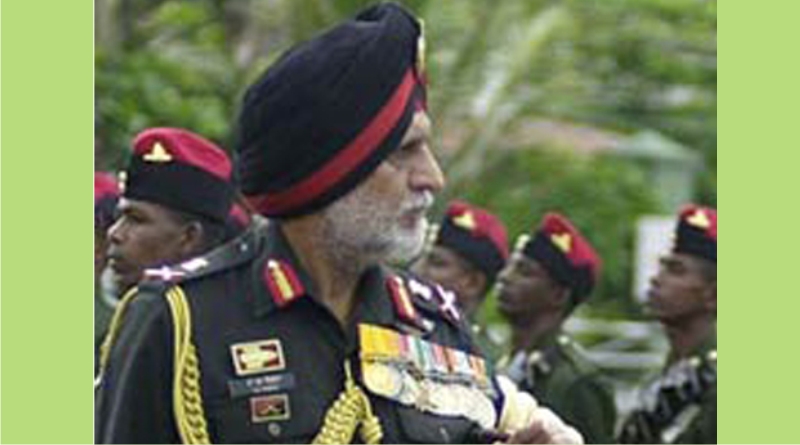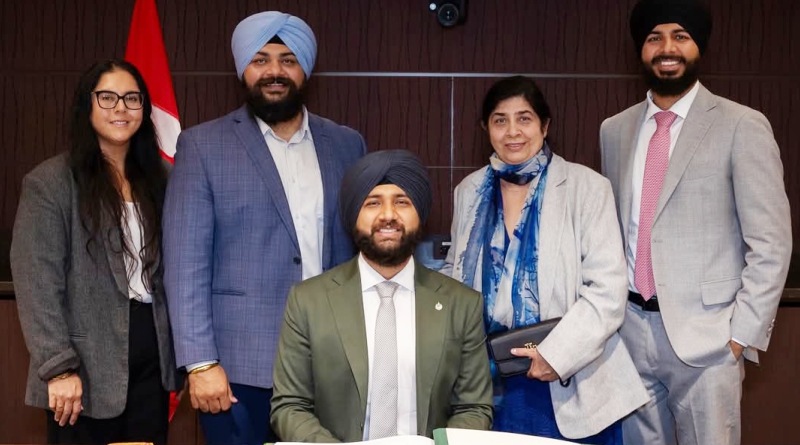In October 2001, Lt Gen Gurbaksh Singh Sihota, took over as the GOC-in-C of the Southern Command. He was serving as the Director General of Military Operations (DGMO) at army headquarters.

The General Officer, commissioned in the regiment of artillery of 7 field regiment, is an aviator. For his actions during the 1965 Indo-Pak war, he was Mentioned in Despatches.
Capt Sihota served with an air observation post squadron during the 1971 operations in Bangladesh. On 9th December 1971, he was ordered to carry a reconnaissance party for the selection of a suitable landing site for helicopter borne operations in the Eastern sector. Skilfully piloting his helicopter, he penetrated deep behind enemy occupied territory.
During this reconnaissance, the helicopter was fired upon and hit by enemy small arms fire. Capt Sihota however, brought the damaged aircraft safely back to a forward helipad. Although his helicopter was damaged, he undertook a mission to evacuate two serious casualties. Later, the same afternoon and in the same damaged helicopter, he led the first wave of the helicopter-borne operations and directed other helicopters to a safe landing.
Throughout, Captain Sihota displayed courage, initiative and professional skill of a high order. For this he was awarded the Vir Chakra.
Sihota has been a Brigade Major of an infantry brigade and also served as Colonel General Staff of an infantry division in Leh. After commanding an independent infantry brigade in western sector, he was General Officer Commanding of Victor Force in counter insurgency situation in Jammu and Kashmir. On promotion to the rank of Lt Gen, he commanded a strike corps in the Western sector.
On Internet :
Military Career and Achievements
-
Commissioning and Early Service: Lt Gen Sihota was commissioned into the 7 Field Regiment of the Regiment of Artillery. An accomplished aviator, he served with an Air Observation Post squadron during the 1971 Indo-Pak war. On December 9, 1971, he undertook a daring reconnaissance mission deep into enemy territory to identify a suitable landing site for helicopter-borne operations in the Eastern sector. Despite his helicopter sustaining damage from enemy fire, he skillfully piloted it back to safety and later led the first wave of the heliborne assault, actions for which he was awarded the Vir Chakra .Facebook+5Barapind Printing Press+5Wikipedia+5
-
Leadership Roles: Throughout his career, Lt Gen Sihota held several key positions:
-
Brigade Major of an infantry brigade.Barapind Printing Press
-
Colonel General Staff of an infantry division in Leh.Barapind Printing Press
-
Commanded an independent infantry brigade in the Western sector.Barapind Printing Press
-
Served as General Officer Commanding (GOC) of Victor Force in Jammu and Kashmir.Barapind Printing Press
-
Upon promotion to Lieutenant General, he commanded a strike corps in the Western sector.Barapind Printing Press
-
Appointed as the Director General of Military Operations (DGMO) at Army Headquarters, where he notably became the first DGMO to visit Pakistan in 1999 to de-escalate tensions in the Siachen Glacier region .The Times of India+1Barapind Printing Press+1
-
In October 2001, he took over as the General Officer Commanding-in-Chief (GOC-in-C) of the Southern Command, the largest command in the Indian Army, serving until his retirement on February 29, 2004 .The Times of India+1Barapind Printing Press+1
-
?️ Honors and Decorations
Lt Gen Sihota’s gallantry and service have been recognized with several prestigious awards:
-
Vir Chakra (VrC): For his valor during the 1971 war.Swarajyamag
-
Param Vishisht Seva Medal (PVSM): For distinguished service of the most exceptional order.Barapind Printing Press
-
Ati Vishisht Seva Medal (AVSM): For distinguished service of an exceptional order.
-
Vayu Sena Medal (VM): For devotion to duty.
?✈️ Legacy
Lt Gen Sihota is remembered not only for his military acumen but also for his leadership qualities, intellectual honesty, and commitment to discipline. His contributions have left an indelible mark on the Indian Army’s operational capabilities and strategic planning.The Times of India
?? 1971 Indo-Pak War: Meghna Heli Bridge Operation
During the 1971 Indo-Pak War, then-Captain Gurbaksh Singh Sihota served with an Air Observation Post Squadron in the Eastern Sector. On December 9, 1971, he was tasked with conducting a reconnaissance mission to identify a suitable landing site for helicopter-borne operations across the Meghna River. Piloting his helicopter deep into enemy-held territory, his aircraft came under small arms fire and sustained damage. Despite this, he managed to return safely to a forward helipad. Later that same day, in the same damaged helicopter, he evacuated two serious casualties and led the first wave of the heliborne assault, directing other helicopters to the landing zone. For his exemplary courage and professional skill, he was awarded the Vir Chakra. SwarajyamagBarapind Printing Press
This operation was critical in enabling Indian forces to cross the Meghna River, facilitating a swift advance towards Dhaka and contributing significantly to the liberation of Bangladesh. Swarajyamag
? 1999: DGMO Visit to Pakistan Amid Siachen Tensions
In 1999, as the Director General of Military Operations (DGMO), Lt Gen Sihota undertook a groundbreaking visit to Pakistan—the first by an Indian DGMO—with the objective of de-escalating tensions in the Siachen Glacier region. This visit was part of confidence-building measures between the two nations and involved discussions aimed at reducing ceasefire violations and fostering mutual trust.
Lt Gen Sihota’s actions during these critical periods exemplify his leadership, bravery, and commitment to duty, leaving an indelible mark on India’s military history.



